Art thou ready for our first ever Illustrator Workshop!
Posted by Sherein Bansal on November 20, 2018Written by Sheena Deviah, Art Director, Pratham Books
This year, over two balmy days in May, we teamed up with the talented Vinayak Varma to conduct an immersive workshop with a bunch of extremely talented illustrators. The participants were Priya Kuriyan, Rajiv Eipe, Somesh Kumar, Sunando C and Kabini Amin and the workshop was led by Vinayak. Fun and snacks were had by all.
This workshop has led to the zany Bow Meow Wow by Priya, the lovable Khusar Pusar by Somesh and a couple more that will be up on StoryWeaver very soon.
Here’s what happened in picto-typographical form!
Lettering: Sheena Deviah
Photos: Aparna Kapur, Vridhhi Chaudhry
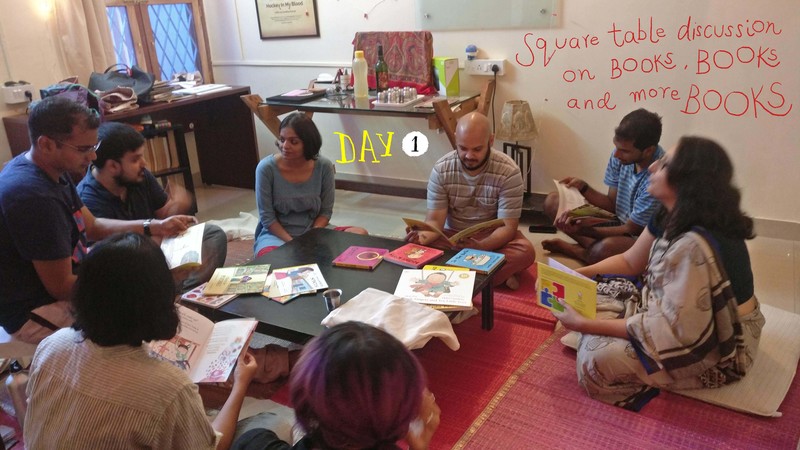
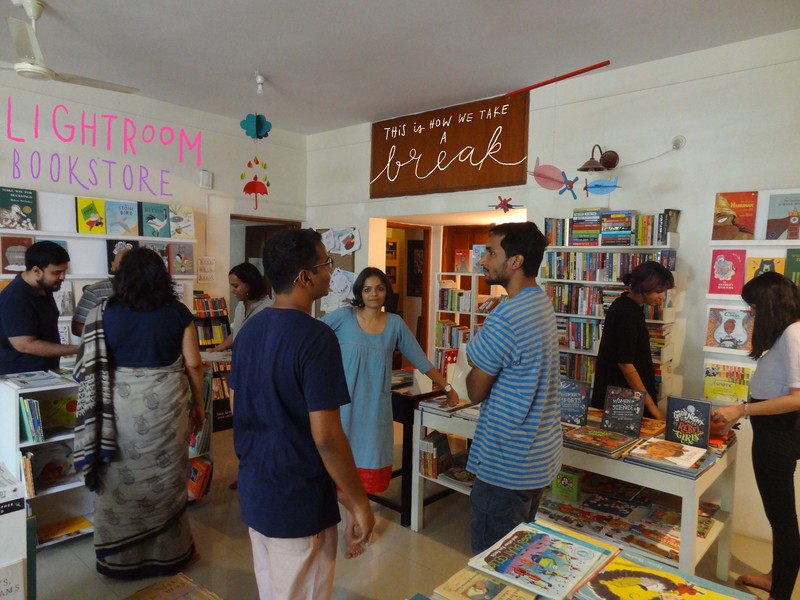
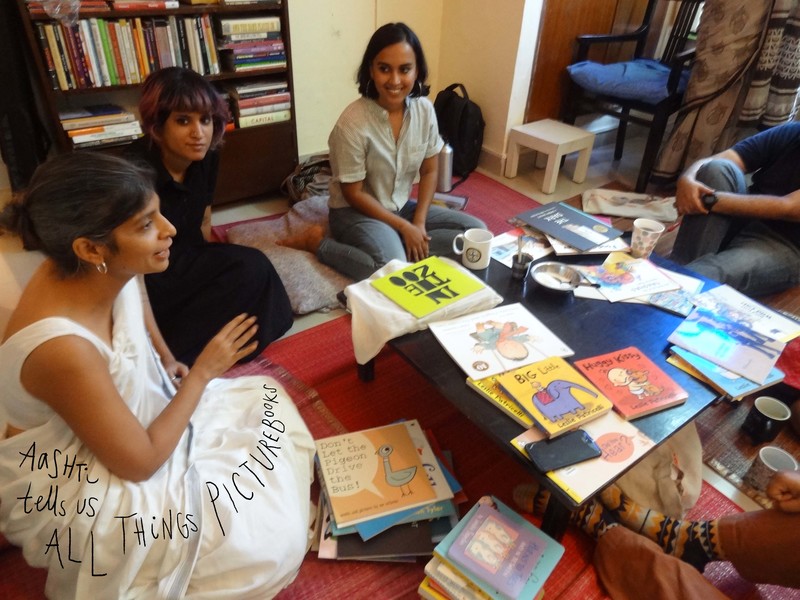
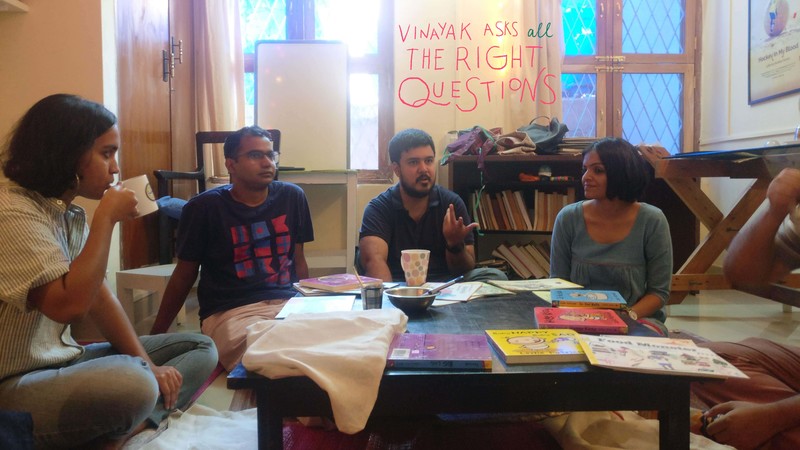
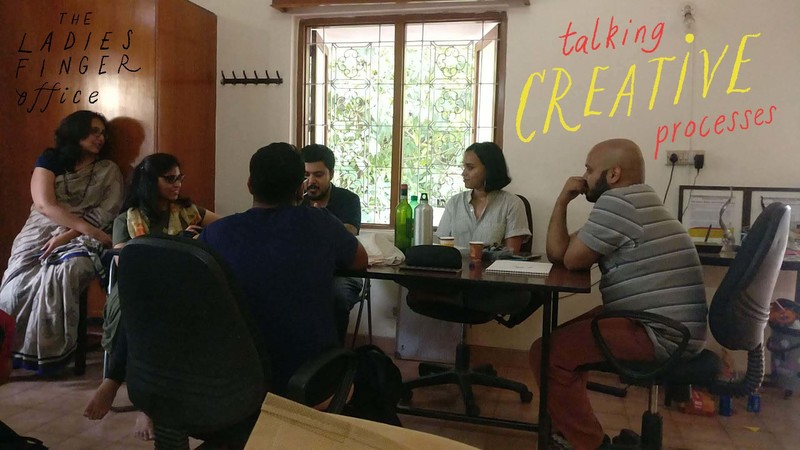
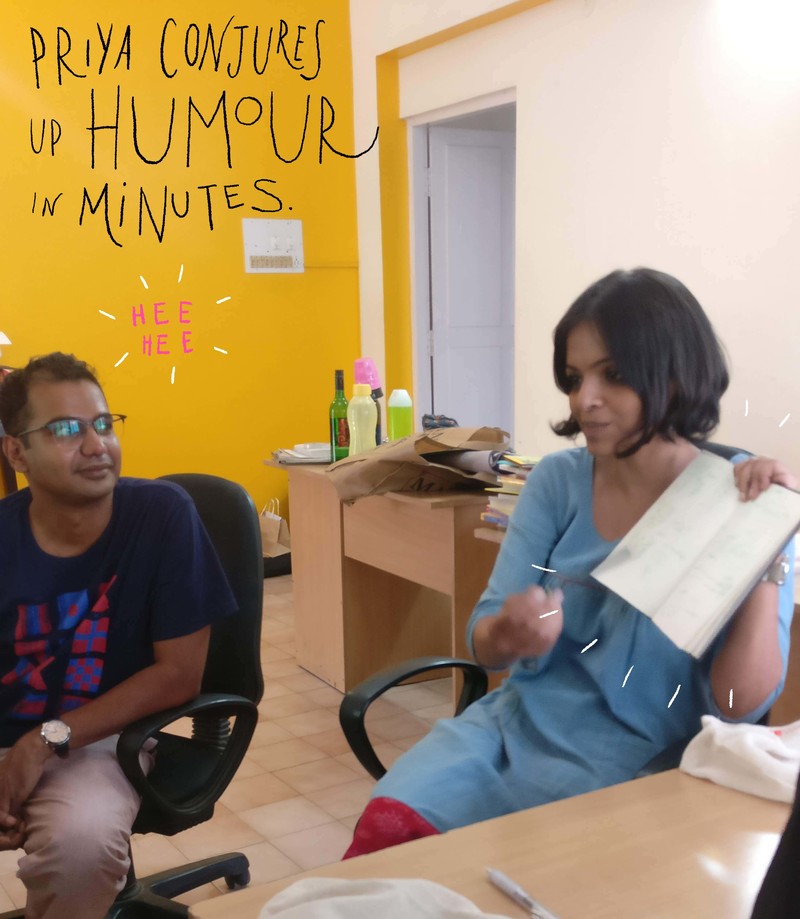
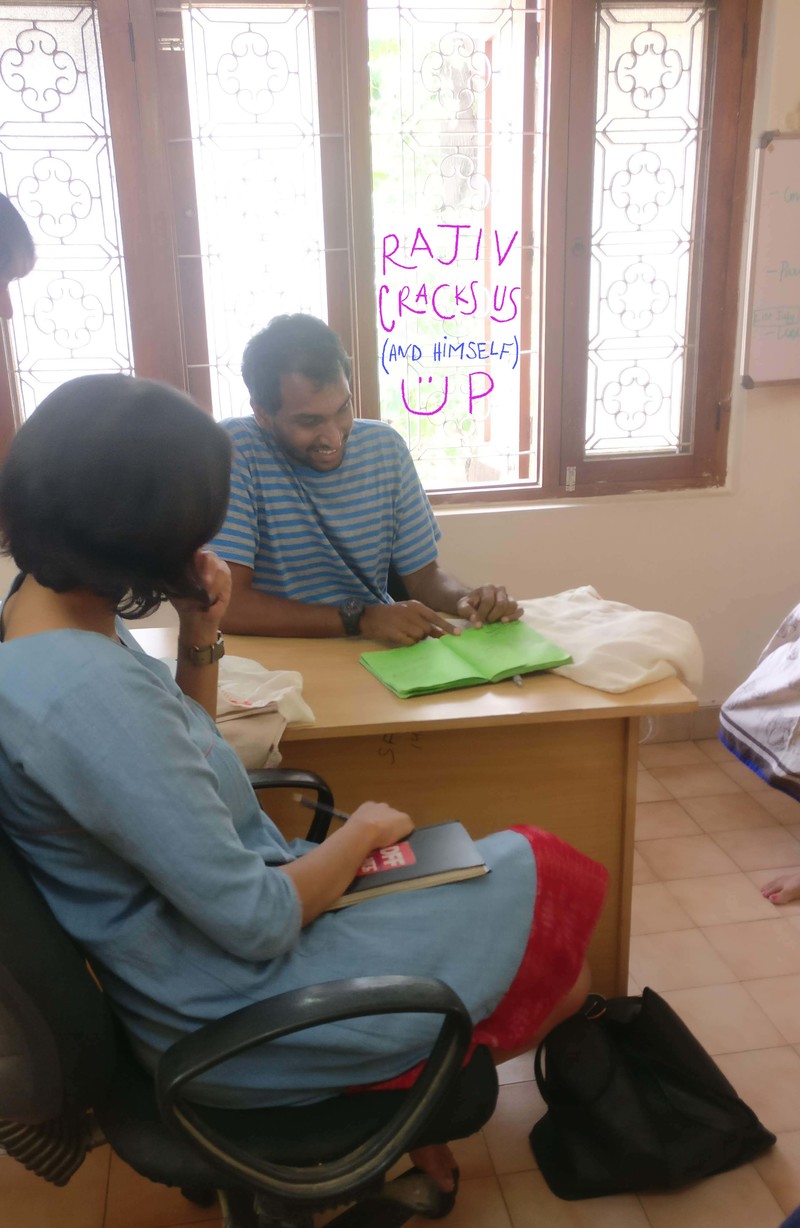
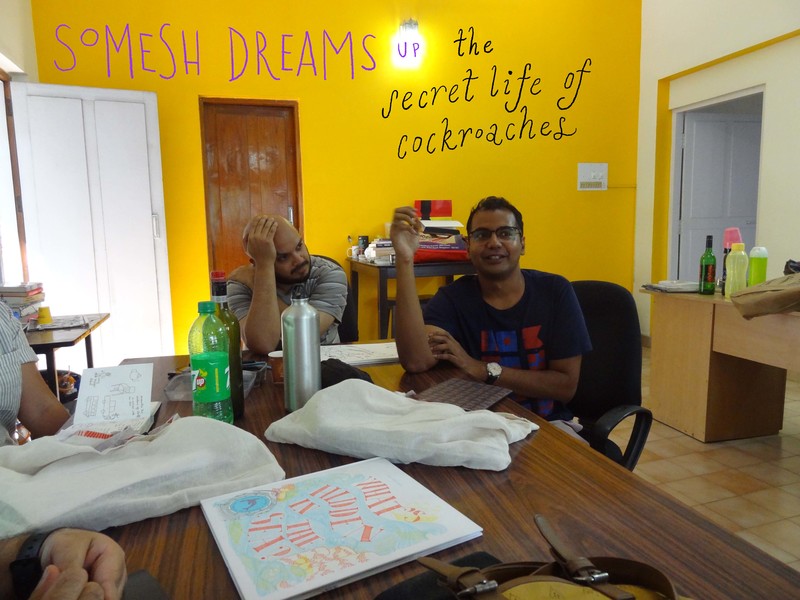
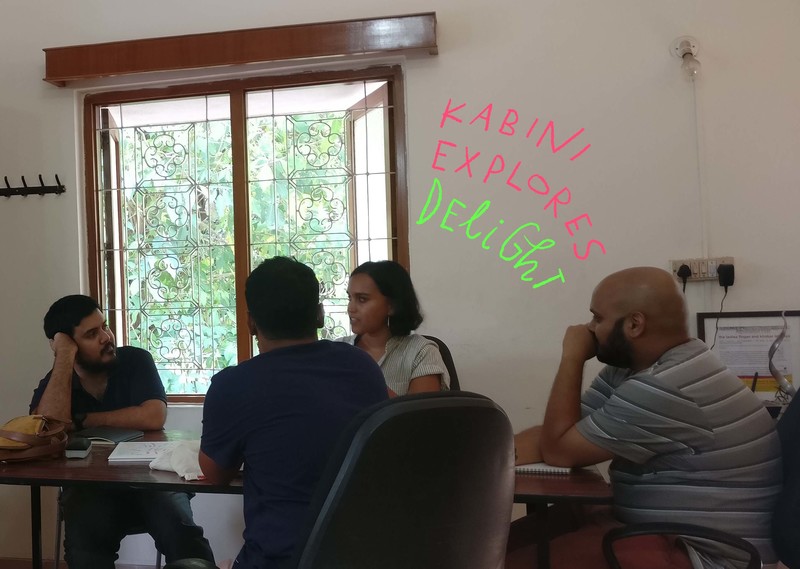
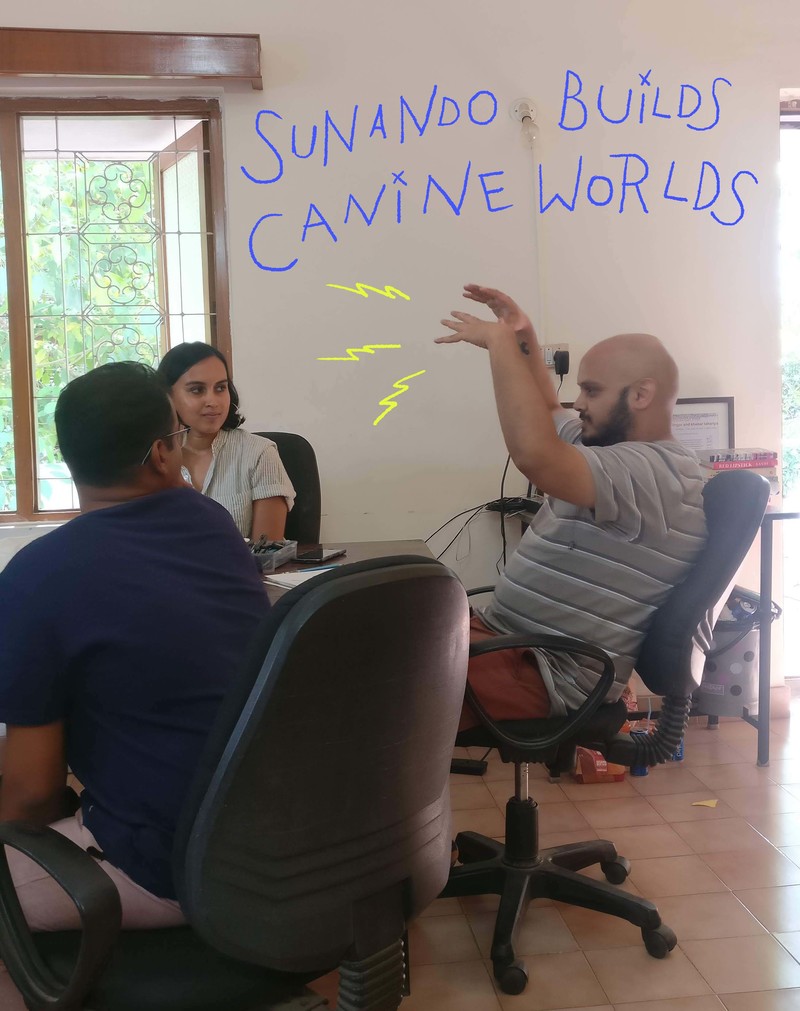
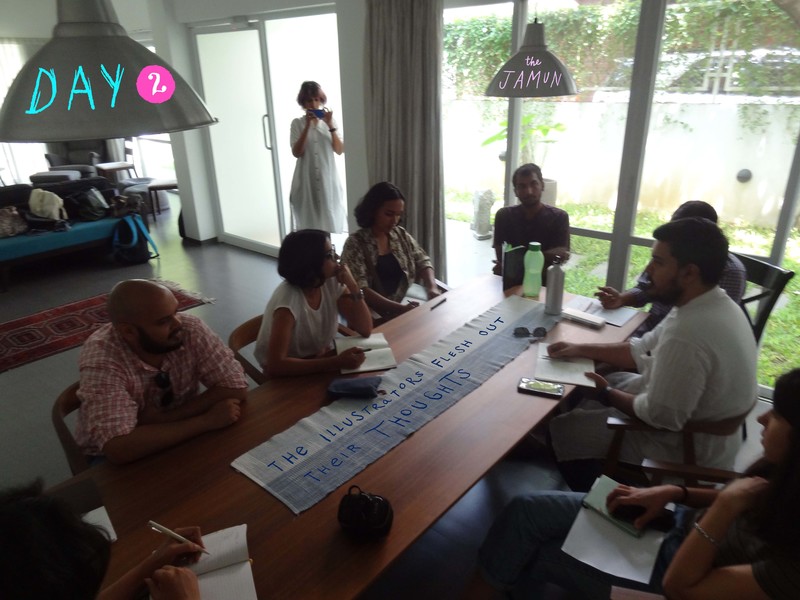
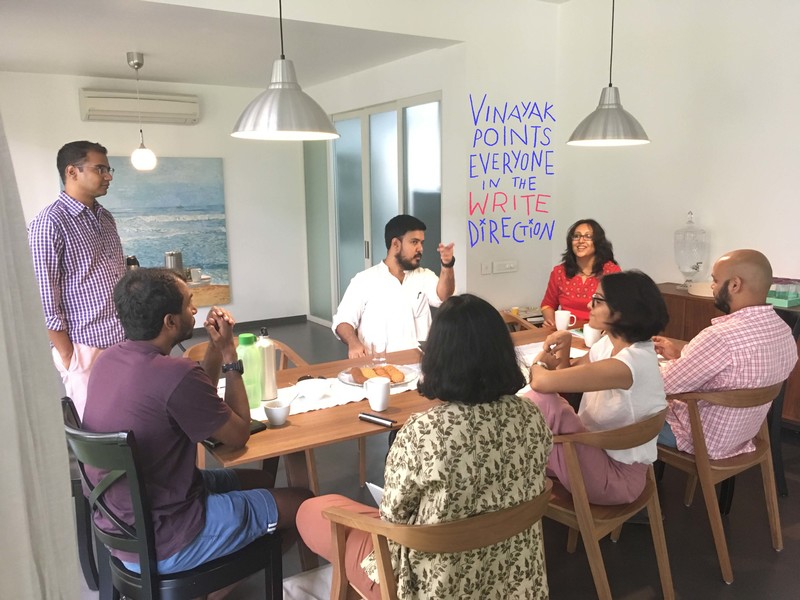
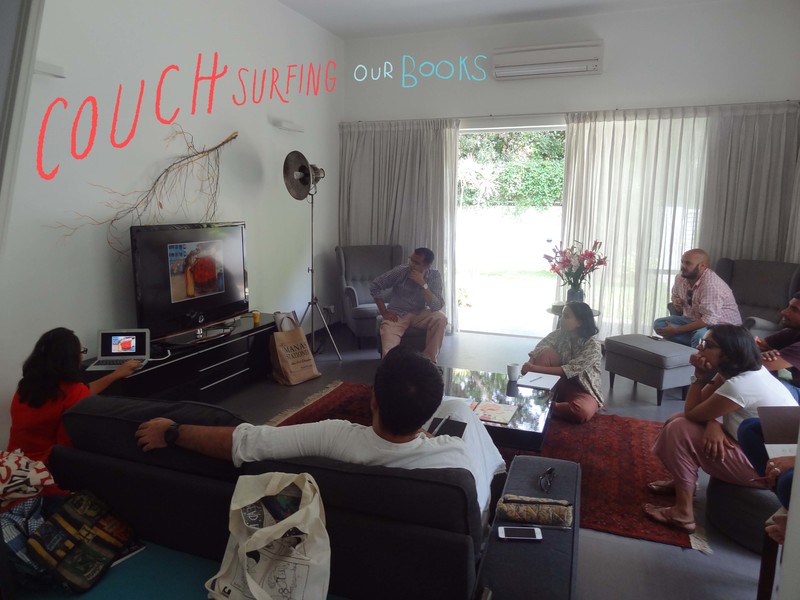
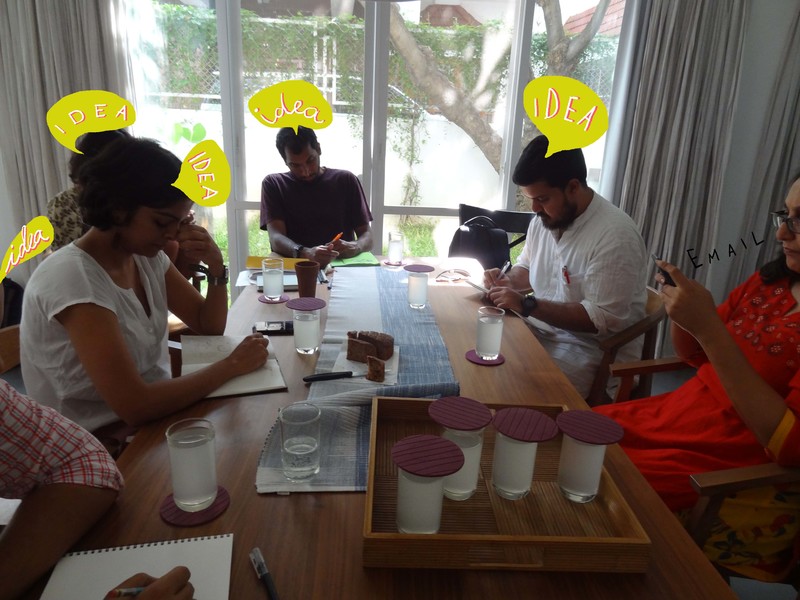
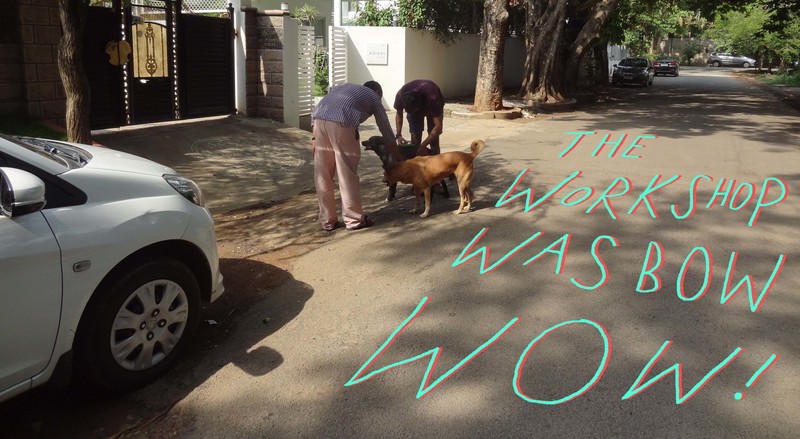
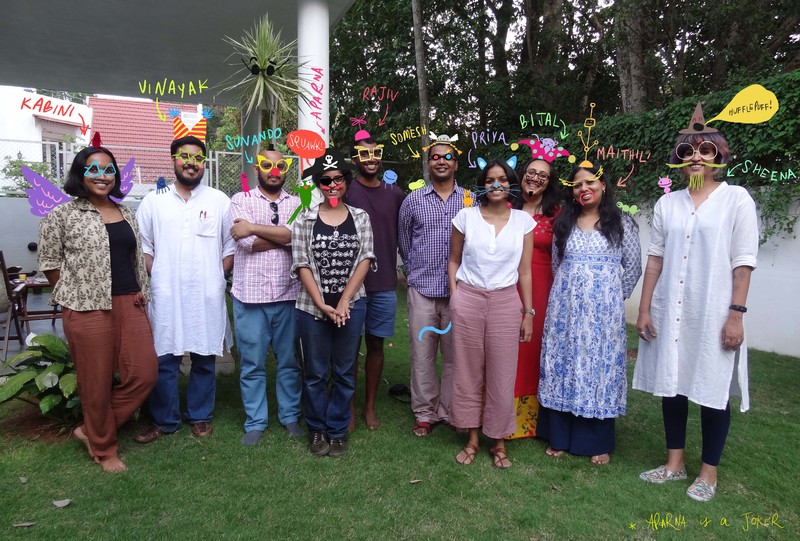
A huge thank you to the folks at Lightroom Bookstore and The Ladies Finger for hosting us.
comments (3)
Author Interview: Marine Biologist Shreya Yadav on writing her first picture book and spying on underwater creatures
Posted by Yamini Vijayan on January 04, 2019In The Night the Moon Went Missing, written by Shreya Yadav and illustrated by Sunaina Coelho, a young girl sets out on a grand adventure to find her missing friend. Shreya is a marine biologist who studies coral reefs. One of her favourite things to do is cling onto a rock underwater and spy on all the fish and plants and crabs and coral that live there.
In this short interview, Zeba Imtiaz, assistant editor at Pratham Books, talks to Shreya about life under water, her favourite children's books and the process of writing The Night the Moon Went Missing, a truly enchanting picture book.
Excerpts from the interview:
How did your interest in the ocean and creatures in the ocean begin?
Growing up in Madras, the Bay was always quite central to our lives. My brother and I would trot off to the beach every other day after school and spend hours in the water. We lived very close by - there was always a sliver of the ocean visible from our balcony - so I think we took the salt and sand for granted. I started diving when I was 19 on a family holiday to the Andaman islands. My father, who SCUBA dives, asked if I wanted to do my beginner course at Havelock island. I remember seeing an octopus and an eel and all kinds of other impossibly bizarre life on my first dive and being totally blown away. Even though I was studying zoology at the time, that was the first time I really wondered about the ecology of a coral reef without it being some kind of abstract concept.
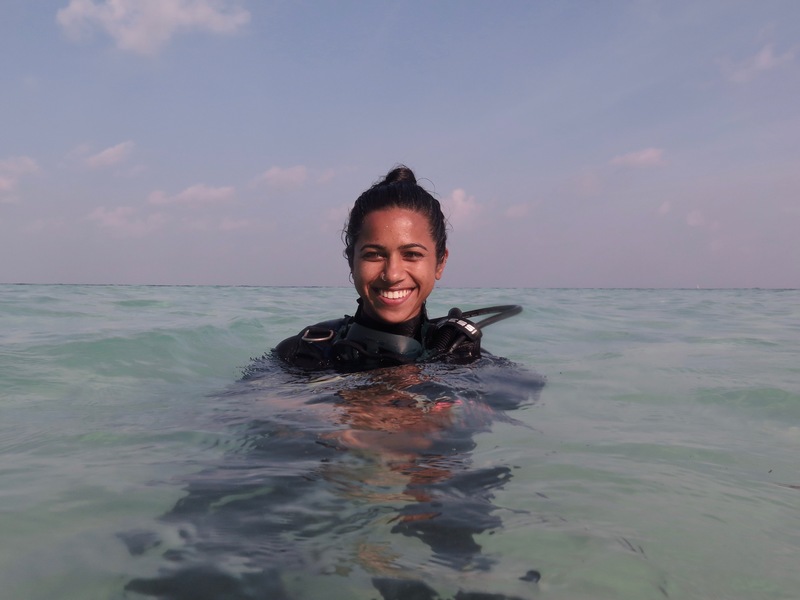
If you had to pick, which would be your favourite ocean creature, and why?
I definitely have a thing for the small and cryptic critters that live on a reef. Often, I will be swimming over something, and will catch a tiny eye peering at me from behind something. I always wonder what their lives are like. Blennies and gobies are probably my favourites.
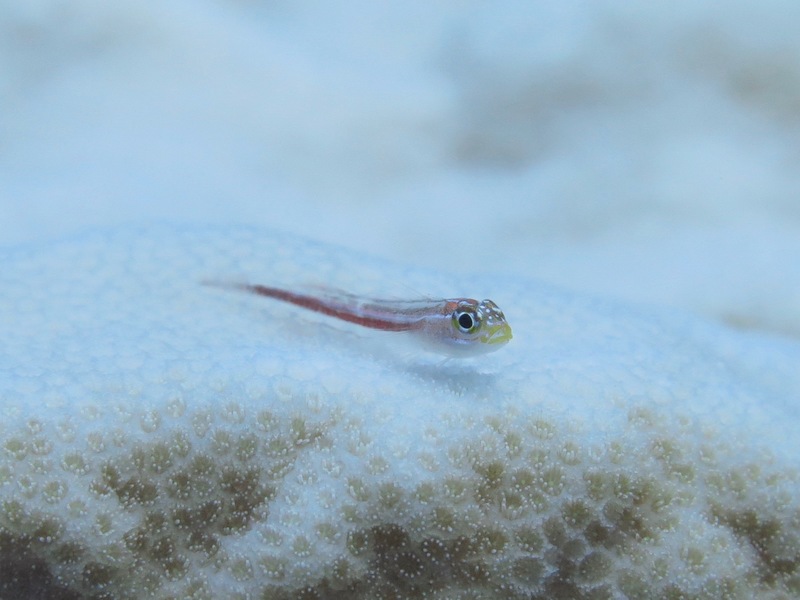
What sort of books did you read as a child? What was your favourite book growing up?
I was lucky to grow up with great books and a family that enjoyed dramatic readings of them! I remember being obsessed with Ekki-Dokki (Sandhya Rao; Tulika) when I was very little and then by a book called Trash! (Anushka Ravishankar and Gita Wolf; Tara Books) when I was a bit older. I also read a lot of Roald Dahl. I think I found Quentin Blake's illustrations very weird as a kid, but there was something so different about them that it was hard to put down.
What was your writing process for your book The Night the Moon Went Missing?
I think we had discussed that bioluminescence would be an interesting topic to explore for this book, but the story actually took a while to come. I knew I wanted it to be taking place on an island and I had a list of creatures I thought were interesting in terms of their biology, but I didn't know how to make it all come together. I think it finally came to me after a few conversations on the phone with friends - saying things out loud always helps.
Later, when I read the first draft out to my parents, my mother told me it reminded her of a story my great-grandmother had written for children which also involved the moon and three young girls on a nighttime adventure. As soon as she said it I remembered that book. Now I feel like I subconsciously plagiarized my great-grandmother!
What was you favourite part of writing this story? What was the most challenging bit?
I had so much fun writing this. I think the most challenging bit was trying to stick to the word limit - I was worried that it would be hard to visualize in so few words, since it was all taking place underwater at night with a bunch of strange glowing animals. But Sunaina's beautiful illustrations more than took care of that. I think my favourite thing about the book now are her illustrations.
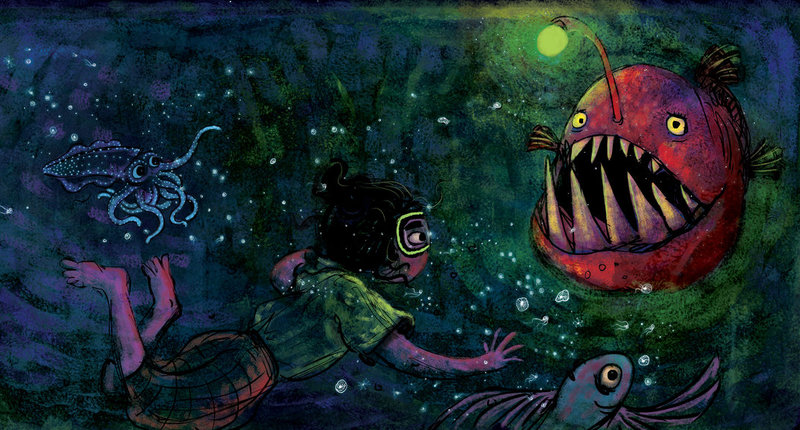
If you were to write another children's book, what would it be about?
I think it would be fun to profile a bunch of marine critters in limerick form, Ogden Nash style.
Do you think your childhood was different from how children live today?
I'm not sure - I have a feeling everyone who is asked this question will probably say yes. I remember having a lot of time in the day to play and climb trees and run around the beach and I hope that that is still the case today.
Who are some of the authors you enjoy reading today?
Big fan of Italo Calvino, Jorge Luis Borges, Loren Eisley, Peter Godfrey-Smith, Robert Macfarlane, WS Merwin.
Any favourite illustrators?
Closer to home, I really like the work of Sonali Zohra, Renuka Rajiv, Vinayak Varma, Orijit Sen, Sarnath Banerjee and the geniuses behind Crocodile in Water, Tiger on land - whoever they are.
Have you read The Night the Moon Went Missing? It is available on StoryWeaver for free, in English, Kannada, Marathi, Tamil and Hindi, and will soon be available in print.
Be the first to comment.'My favourite thing to draw is portraits of people I meet when I travel' - Illustrator Anjora Noronha on creating art
Posted by Yamini Vijayan on October 31, 2017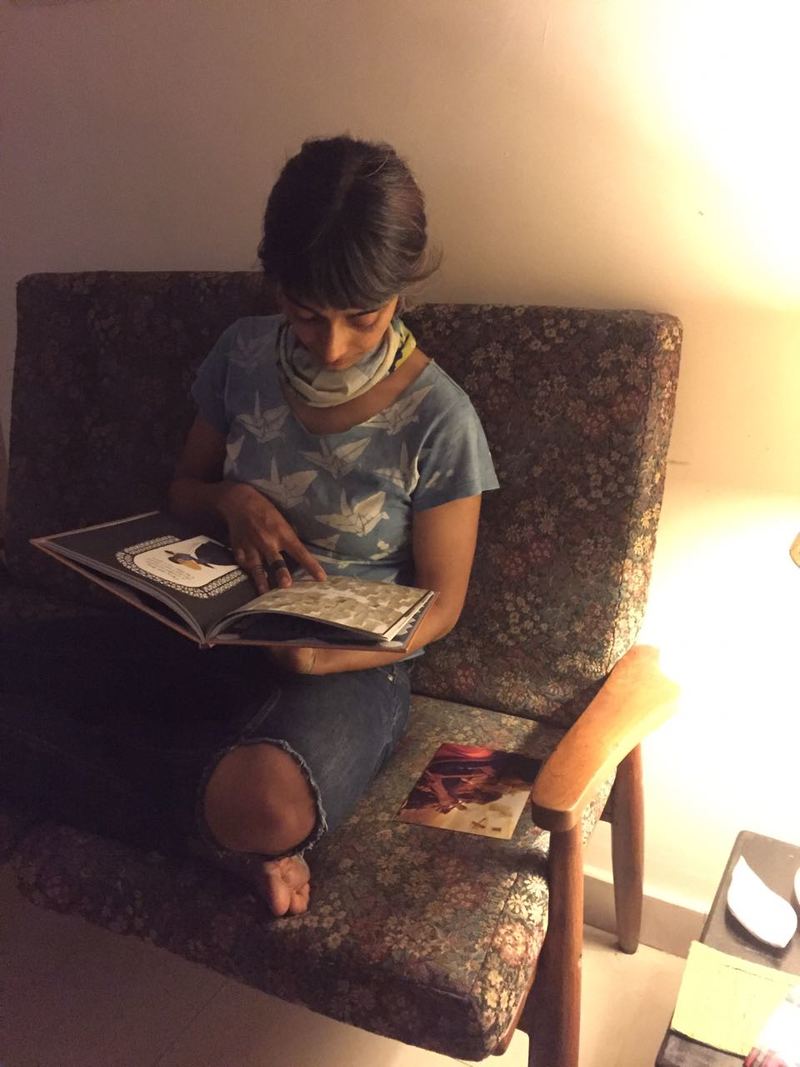
Anjora Noronha was one of the Illustrator Gurus for our #6FrameStoryChallenge in 2015, and we're delighted that she is illustrating a book for Pratham Books this year. Written by Sheila Dhir, this story is about the moving friendship between a goby fish and a pistol shrimp who live deep in the ocean.
Read a short interview with Anjora, in which she gives us a peek into into her illustration process.
What mediums do you most enjoy working with? How do you choose a particular medium for a story?
For personal projects, my drawing kit contains a sketchbook, watercolour postcards, a tiny bottle of Indian ink, a tiny tube of watercolour in ivory black, a mechanical pencil, a 'pencil' eraser, an aquapen, a MUJI gel pen (LOVE) and lots of tissues collected from all over the place.
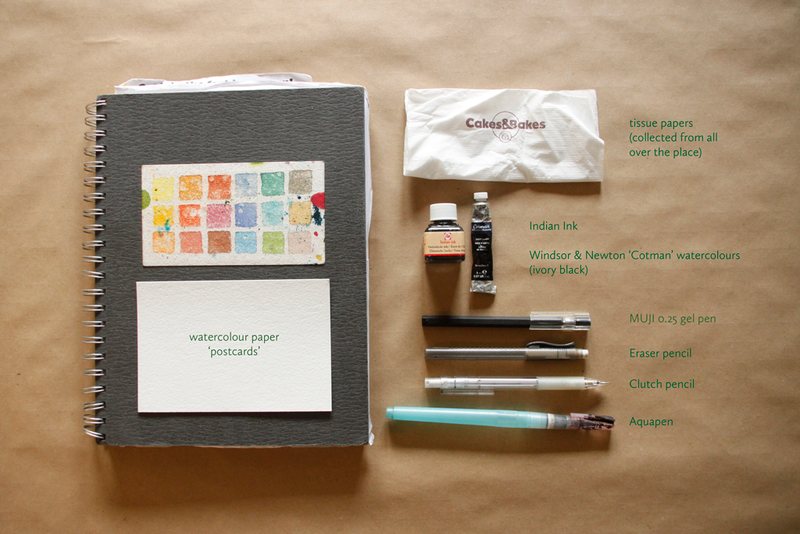
Other than that, I don't have a particular style or medium that I work with, so the start of a new project is always a mix of excitement and nervousness at discovering which medium is going to be the medium of choice. I somehow never know, and so each time I start, I have to go through sheets and sheets of paper and material, looking for what 'feels right'. 'What feels right' includes: how much texture I can achieve; if the essence of the medium suits the essence of the story (this is naturally highly subjective); and also very simply - if it excites me.
What kind of stories do you enjoy working on the most?
For children's books I prefer working on books that have a strong environmental theme. For adults I prefer working on stories about people and cultures. My favourite thing to draw is portraits of people I meet when I travel.
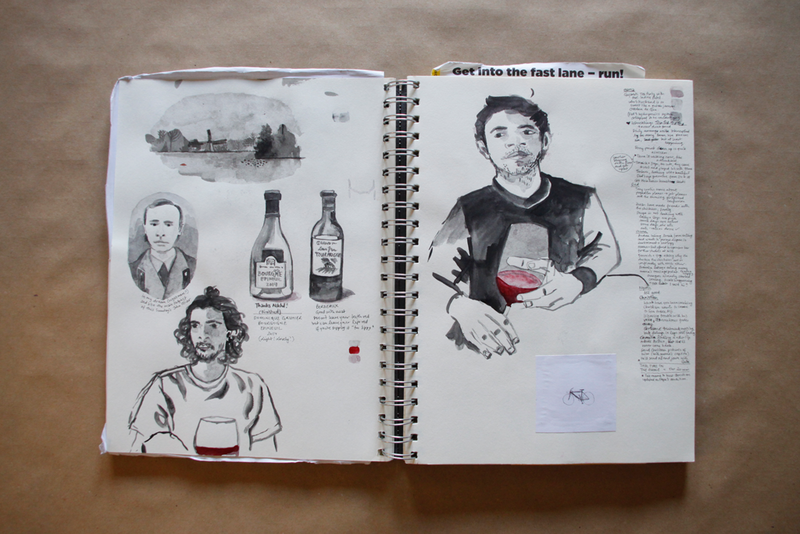
Which part of your work do you enjoy the most, and which part do you enjoy the least?
The most enjoyable part is when all the frames and page sketches have been approved and finalized, and it's time to colour them in. That is the most charming part of any project for me: I put on music, or a podcast, and spend hours glued to my desk in creative solitude. Most details have been decided by this stage, at this point it is a matter of turning off the thinking side of my brain and allowing things to happen on their own. I sleep at night excited about the next day of drawing. Even though I find it more challenging, I also love the character development stage because either I act out expressions and postures, or I ask someone to act them out for me. What I enjoy the least is scanning and cleaning the final artworks and preparing them for print. Following that, there's always the big existential angst about which font to chose, and at what size, with very few helpful cues from the universe.
This year, you’re illustrating a book for us on the symbiotic relationship between a goby fish and a pistol shrimp. We loved all the character sketches you made for this. What kind of preparation goes into illustrating a book for children?
Ideally, the initial stage would involve doing studies of the characters from life, but since I didn't have access to the two main characters in the story I'm currently working on, I watched as many YouTube videos and read as many articles as I could. Then I filled many pages with drawing after drawing of the characters, repeating them over and over again. My aim was to get to know these two so that I could intuitively draw them in any situation. This was followed by a style and colour test, which is the phase where I try to discover which medium I will be working in. For this book, it is colour pencil, which is a medium I have never worked in before. I tweaked my colour palette multiple times and drew one page over and over again, changing individual details with every attempt to discover what textures and effects I could achieve with them. I have stopped using sites like Pinterest to find inspiration.
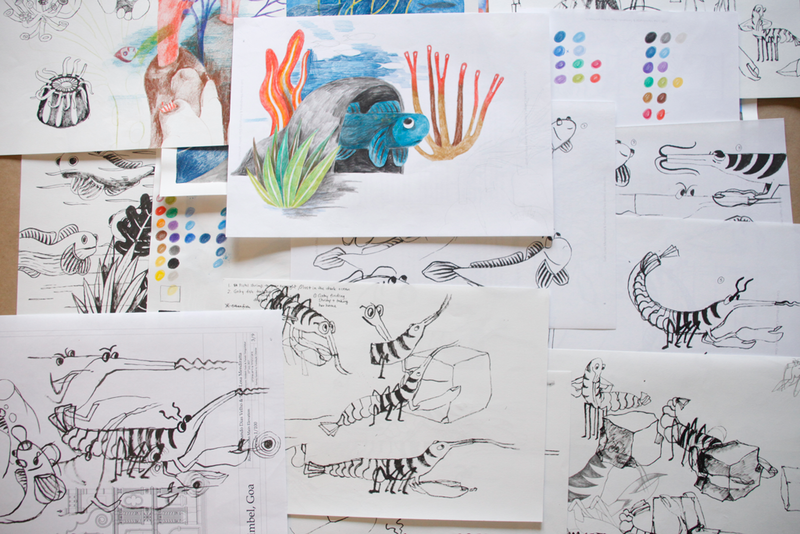
The third phase has been to thumbnail the entire book, and incorporate feedback. The practical side of illustrating for children cannot be ignored, and I like collaborating with editors as they are involved in the entire process but are not stubborn and attached to everything (as illustrators tend to get). This is where we have reached so far. Some pages need to be tweaked, some are good to spend afternoons of coffee and music with. Each thumbnail will be fully detailed and shared with the editors before being coloured in. The last stage is scanning, cleaning and layout. After that I hand over the files and wait for the printed books to come by mail :)
Who are some of the illustrators whose work you follow closely?
For children's books: Carson Ellis and Júlia Sardå Portabella. http://www.carsonellis.comhttp://www.carsonellis.com has a Q&A section on her website, and one of the things she speaks about is her limited gouache colour palette, and how - when she added a colour to it - it was quite ground-breaking for her. Júlia Sardå Portabella seems to work mostly digitally, so I turn to her work for clues on how to work digitally - a new medium for me. Recently I discovered the work of Joann Sfar, and have bought every book of his that I can get my hands on. The colourful and surprising artwork of Brecht Evens. One of my favourite young, contemporary artists is this guy called Ward Zwart, who puts up a lot of his work online, but is very mysterious otherwise. (He did reply directly to a message I left him on Instagram though :) Stephanie K. Birdsong, mostly known as shoulda-woulda-coulda: for her daily and very quirky warm up paintings in her Planner. Oh, to be so productive on a daily basis! And of course, the work of my peers in India, some of whom I know personally, and whose creative journeys I have been following for a while now.
How do you deal with creative blocks?
In three ways. The first is that I break down what I have to do into micro steps, and then push myself to complete one micro-task after the other, all the while telling myself that I can change everything at a later stage. The point is just to gain momentum, which always leads to enthusiasm. Most of the time, producing a lot of work that doesn't work leads to something that does work, and when that moment comes, the Battle against the Block is won. The more involved I get with an artwork, the more enthusiastic I am to delve into the details and spend time on it. The second is that I try to meet someone who is currently in a good creative place / moment. There is nothing that kindles my excitement about the work that we illustrators and designers do, than having a long, dense conversation about the nitty-gritties of the creative process. There hasn't been a time when it hasn't left me fired up to sit down at my own table and MAKE. The third is to not allow myself a break after completing a big project, so that I don't lose the rhythm and flow, but I'm still working on that, I almost always end up taking a short break :P
Anjora Noronha grew up in Vienna, moved back home to Goa, studied at the Srishti School of Art and Design in Bangalore, worked in Delhi, and then studied more at the University of Barcelona. She currently lives between the Indian tropics and a windy little town somewhere in northern Europe, where she works as an illustrator on a variety of projects ranging from comics, children’s books, and historical books of places long forgotten.
comment (1)